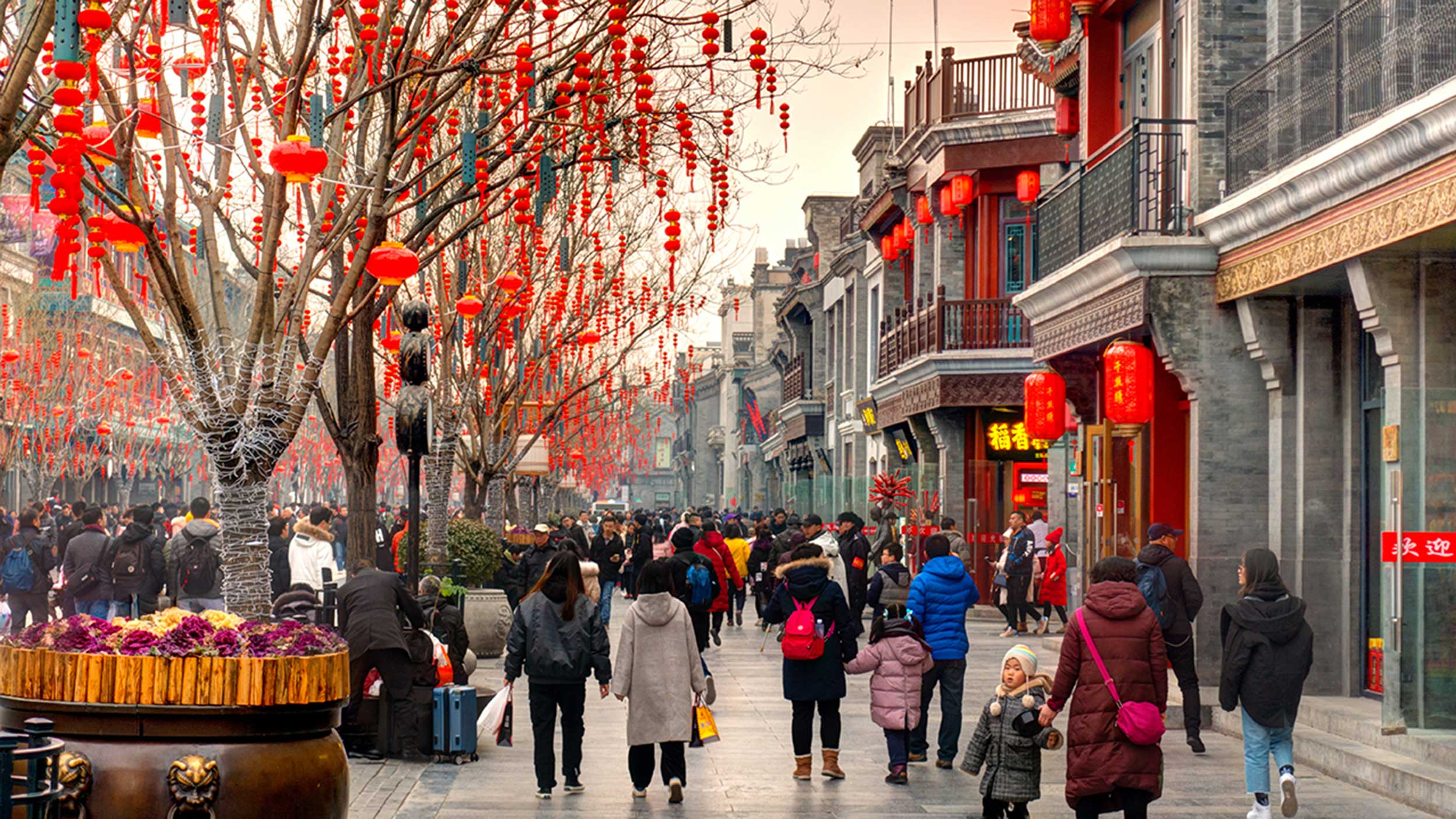Invesco’s Developing Markets team, led by Chief Investment Officer Justin Leverenz, addresses salient questions that have arisen in the last few weeks concerning regulatory interventions in China and how that impacts the team’s outlook for Chinese equities.
Q. What is the motivating force behind the cascade of regulatory interventions in China over the past few months? Is there an underlying logic to this?
We have witnessed an acceleration of sharp-speared regulatory interventions across sectors, which has blind-sided investors and untethered confidence in stocks, particularly Chinese American depositary receipt (ADR) listings. The Nasdaq Golden Dragon China Index (HXC), a market capitalization weighted index of Chinese companies listed in the United States, is down nearly 27% year to date.1
We believe that there are three layers of questions which need to be asked to fully grasp what is going on with these chaotic interventions.
- First are the proximate implications. These questions are around the “what” of new regulations. What regulations have been imposed? What are the implications of these regulations on company growth, market share, and profitability?
- The second layer of questions involves broader policy goals and objectives behind such regulatory change. These questions are the “why” behind these regulatory actions.
- The third set involves existential changes in policy behavior. Has there been a fundamental change in behavior, or an existential change in China’s political economy? And what has motivated this change? This layer of questions allows us to speculate beyond the proximate to better grasp what policymakers are trying to incubate in response to diverse tensions, both domestically and internationally.
We believe the investment community is today focused largely on the proximate layer of questions, which are important in understanding near-term earnings implications. However, in the context of a changing China, these questions are unlikely to be helpful in assessing the value ultimately embedded across companies.
At the proximate level, we have seen a host of chaotic regulatory change.
- Fintech regulations which disrupted entirely the fast-moving fintech sector and coincided with the failed Ant Group public listing late last year. These regulations were designed to control system leverage (unsecured retail credit), harmonize banking regulation with tech platforms, and reduce moral hazard (with the securitization model of Ant).
- Anti-monopoly regulations oriented around monopolistic competitive behavior and consumer protections. These have a particular focus on dominant internet platforms.
- Data security regulation.
- Worker protection regulations for gig-workers (food delivery, e-commerce).
- Private sector education regulation, which effectively banned much of the organized K-12 after-school tutoring business and led to a near mortal demise of the hitherto fast-growing industry.
- Content restrictions on entertainment and fresh attacks on social media — and perhaps soon on short-form video platforms, including the role of celebrities, influencers and opinion-leaders.
In this environment of accelerated regulatory intervention and fast-developing news, questions that need to be answered are around implications for company growth and profitability. We have seen a violent initial reaction as investors grapple with understanding first derivative implications to company valuations.
Now let us consider the “why.”
The second set of questions — those that involve the motivations behind these policy shifts — seem reasonably clear to us. However, these forces are highly nuanced and inter-linked. Let us consider these layers of “why” one by one.
Firstly, two key threads are quite obvious:
- Inequality in China following three decades of unbridled growth. Policymakers in China — like much of the rest of the world — are seeking to shift the balance of increasingly asymmetric distribution of returns between capital and labor. There is a well-articulated attempt to improve social mobility, to create greater equality of opportunity via fair competition and regulation of monopolistic practices.
- Development of China’s capital markets. We also think a motivator of at least some of the actions is perhaps the desire to foster development of China’s capital market by restricting overseas listings and promote Hong Kong as the preferred “offshore, but domestic” capital market. We will come back to this important topic later.
These whys are broadly aligned with bigger policy goals articulated at the 19th Party Congress in 2017, during which “Xi Jinping thought” was enshrined, with its emphasis on “socialism with Chinese characteristics.” The three broad goals that we believe are relevant here deal with the negative externalities associated with China’s breakneck growth over the past few decades: environment, equity, geopolitics. And of course, each of these dovetails nicely with industrial policy goals which have been developed to cope with these challenges.
- Environment. We have witnessed enormous strides to improve environmental sustainability in China over the past five years. These include supply side interventions to control production of heavy industry, including steel, coal, cement and mining. And efforts to aggressively promote expansion of renewables, electrification of transportation (electric vehicles and components) and increase ultra-high-voltage power distribution. These are also industrial policy priorities for industries of the future.
- Equality. Policymakers are contending with social frustrations around fairness and social mobility, which are, like everywhere, challenges to the legitimacy of the state. To improve equality of opportunity, China has been working ambitiously on housing, education, health care, pensions and insurance.
- Geopolitics. The third goal is national security in a world that China perceives to be increasingly hostile to its rise. Policymakers are trying to remediate perceived external dependencies. The three most important of these, in our view, are dependence on oil, semiconductors, and the US dollar as the dominant currency for its trade.
Now for the third set of questions. Let us consider the existential threats a little deeper.
We believe there has been an existential change in policy vision over the past few years in China. The current leadership in Beijing sees the world with a different lens than its predecessors of the post-Mao Zedong era. There appears to be an increasingly held belief in China that the West is simultaneously failing and wants to contain China’s rise. The belief is that the United States, in particular, is fatigued from its international obligations following costly interventions in the Middle East and Central Asia. And that the Great Financial Crisis, the COVID pandemic and the costs of these failed interventions have exposed deep structural and cultural problems in the West. In essence, this belief leads to the view that the United States is once again turning inwards, leaving a vacuum in geopolitics. There is also a belief that the liberal-oriented system developed post WWII is increasingly less accommodating to the rise of China as the United States, its sponsor, faces relative decline.
China is suspicious (perhaps correctly) that the West’s ultimate policy goals are containment and transformation, and that Western policymakers will not accommodate what they see as a non-liberal player for global influence. Thus, China needs to redress its vulnerabilities, which are oil, semiconductors and the US dollar.
- Oil. China is not a resource-endowed country. Therefore, the electrification of transportation and the move towards renewables is not just for environmental goals but for national security and sovereignty.
- Semiconductors. Semiconductors and underlying technology components are controlled principally by America and partially by Japan and, therefore, there is a very deep agenda for China to try to gain independence in this space.
- Dollar. China wants companies to retreat to China, principally to Hong Kong, which although offshore, is a domestic market. While China is the most important trading nation in the world, the US dollar is the reserve currency and almost all international transactions are intermediated with US dollars. The dominance and potential weaponization of the US dollar creates a perceived national security challenge. This contributes to China’s desire to develop a deep liquid capital market to encourage trading partners to adopt the renminbi (RMB) as a transactional currency.
Q. China is unique, but is it a capitalist system?
We are all quite frustrated as investors with the unpredictability that accompanies this dizzying level of regulatory intervention. But we have also tried to step back and understand better the uniqueness of China.
China’s economy is a hybrid model, a form of political capitalism that is not entirely uncommon in the world — it has parallels with development in much of Asia in the twentieth century (South Korea, Taiwan, Malaysia). China’s model today is deeply embedded in thousands of years of political and cultural development of the nation. It is a model that accommodates capitalist enterprise embedded in a highly paternal state. It is a model — as Branco Milanovic articulates well in the book Capitalism Alone — designed to be managed by an independent state run by an efficient, technocratic bureaucracy.
The first principle is that state autonomy is extremely high and unlikely to change. Rule of law is ambiguous by design, which allows the state to navigate free from legal constraint and can result in capricious policy. However, its goal — and its legitimacy — is ultimately inclusive growth.
But China is decisively a capitalist economy. The private sector is dominant in production, employment and growth. Capitalism is deeply embedded in China. The private sector, which is encouraged by the government, is vibrant and is the source of growth and innovation in the economy. However, it is a hybrid model where the state provides efficient delivery of public goods that enable development (infrastructure) and balance externalities (inclusive growth).
Q. Will China experience the middle-income growth trap common to other emerging economies?
The notion of a “middle-income trap” for emerging economies refers to the difficulty of navigating development away from the low-hanging fruit of labor absorption and deepening capital intensity (typically from farms to factories) and toward higher value-added, more highly productive service industries. The World Bank coined this term 15 years ago to account for observable failure in most developing economies to break out of $10,000 to $12,000 per capita incomes across much of Latin America and Asia.
This idea has been a recurrent theme among China skeptics and is often conflated with China’s demographic challenge. But China is really different, in our view. And the regulations — or perhaps more appropriately “reforms” — in China over the past few weeks are efforts by policymakers to ensure that China remains different, overcoming the middle-income trap common to many developing countries.
The middle-income trap is misunderstood by most. The real mistake is one of statistics. Most developing countries’ middle-income trap is fundamentally a function of dual-sector models that are characterized by a relatively small group of efficient formal sector workers who drive economic growth and an overwhelming majority of informal sector labor workers who are trapped in low-skilled or unskilled “mom and pop” industries with almost zero structural growth. The middle-income trap is thus a function of an absence of social mobility, or the inability of these countries to deliver “inclusive growth.” The statistical mistake is that median incomes grow slowly because the supermajority of developing country populations do not grow in real terms, while the small middle classes in these countries grow far more rapidly but cannot pull the entire nation forward.
In contrast, China is the only country on earth that has been able to sustain high levels of growth, and inclusive growth, over the past three decades. The country has literally birthed 300-400 million middle income consumers during this period of time.2 It is now struggling to deliver similar outcomes for the rest of China’s population over the next few decades. The Xi administration is trying to simultaneously deal with the instabilities of the past few decades — environmental, equity, geopolitical risks — while ensuring financial stability and inclusive growth. If it delivers such inclusive growth, we believe China will avoid the middle-income trap — and our bet is that it will be successful in that endeavor.
Q. Are Chinese equities still investable?
Despite feeling downcast about the considerable retreat in a number of our Chinese holdings, we believe considerable opportunities for investors still exist in China, and these should not be dismissed out of hand. Those opportunities exist in a few buckets.
- Alongside this broader policy imperative of “inclusive growth,” we see continued opportunities in the consumer sector. We have large holdings in structural growth industries like hotels, restaurants, and luxury goods. In our view, these are thriving industries prone to consolidation by leading players.
- Second, we believe there are significant long-tailed opportunities in China’s life sciences and health care industries. These also fit within China’s policy priorities to improve inclusive growth, redress significant unmet medical needs across the population, and build global leadership in next-generation segments of drug innovation and manufacturing. There are, in our view, many parallels between the life science industry in China today and where China’s dominant internet companies were a decade ago. Like the internet leaders of the past, many drug developers are borrowing models (clinical assets, targets, in-licensing) from the West that are being adopted for China’s very large drug market. Given the enormous advantages China has in terms of talent (chemistry, biology, engineering) and capital, we expect these companies to aggressively invest early cash flows into real life sciences innovation (bi-specifics, antibody drug conjugates, gene therapy, mRNA vaccines and therapies, bioinformatics, health care tech). We believe we will see a number of companies emerge as leading global players across the life sciences industry over the next decade.
- Finally, we do not dismiss the prospects that many of China’s leading tech companies can find new balance and prove to be excellent investment opportunities here, after big declines. A few months back, Tencent, Meituan, Pinduoduo, and many other leading Chinese businesses were perceived to have a bright future, with a profitable earnings track ahead of them. Many of these stocks are now down 30% to 50%. So, the first question to try to answer is — has the earnings power of these tech platforms reduced by 30% to 50%? If not, how much has sentiment played a role in this market direction? When the question is framed like that, we see a lot of hope and indeed opportunities.
The second question specific to China tech is — what good could come out of regulation? Over the last decade, we have seen several instances of destructive competition with profitability under competitive attack thanks to subsidies, price wars, and mis-directed investments. We have seen prolonged battles for market share that seemed illogical, especially in markets where there were just a few players left — as with fintech, food delivery, and parts of logistics. In the future of China tech, we sense some sanity. Under regulatory pressure, some rationality could come back in the way these economic decisions are taken. As investors, we might see very positive consequences in terms of long-term profitability, steady earnings growth, and a decline in these periodic adrenaline rushes China tech has seen in the past. These could lead to positive investment outcomes.
Q. Are you still “uber-bullish” on Chinese equities? And if so, why?
We still very much believe that China is in the early stages of what will potentially be one of the great bull markets in human history. That bull market really does not have much to do with “tourists” in Chinese equities, i.e., people who either do not have a mandate to invest in emerging market equities or have a shallow understanding of the nuances of investing in China.
The bull market in China will be structural, in our view, for several reasons.
- First, we expect China to remain the dominant source of global growth for much of the next decade. China is expected to, in our estimate, create average annual economic growth of approximately US$1 trillion per year over the next three to five years. To put this in perspective, we expect China’s growth to generate economic output the size of Mexico plus Saudi Arabia plus Vietnam over the next three years. In our view, China is an unstoppable growth engine.
- Second, as we have written previously, China’s enormous savings pool is expected to be increasingly diversified toward equities and away from real estate (given policy constraints) and liquid, risk-free assets. And China’s household wealth is enormous, given high savings rates. According to Credit Suisse estimates, total household wealth in China has risen 21x since the turn of the century to US$78 trillion.3
- Thirdly, there are investment opportunities, in our view, that are intricately aligned with policymakers’ goals of inclusive growth, including health care, consumer staples and consumer discretionary industries.
- Finally, there will be beneficiaries of the new regulatory landscape as well within China tech too, which currently appears most impacted by regulatory intervention. And valuations are now, in our view, attractive for long-term performers in the Chinese internet space.
Q. What are your thoughts on emerging market equities more broadly?
Emerging market equities have had a very difficult period over the past decade. As of the end of June 2021, the MSCI Emerging Markets Index had a 3.6% compound annual growth rate over the past 10 years in USD terms, compared with 15.4% for the US S&P 500 Index and 6.1% for the MSCI EAFE Index.4 The retreat of China has stalled emerging market (EM) performance over the past 12 months as well. While the S&P 500 Index generated 36.5% trailing 12 months returns and MSCI EAFE Index has delivered 30.3%, the MSCI EM Index has only given 19.7% returns during this period.5
This shocking underperformance is anomalous in a climate where global rates are extremely low, commodity prices have surged, and the dollar has been in modest decline. It is most unusual.
The culprits have clearly been the “2C” – China and COVID. Regulatory anxieties in China have risen at a time when COVID-19 continues to inhibit a recovery in many developing countries that have not been able to access vaccinations.
We have discussed at length our positive views on China and Chinese equities above. The bottom line is we continue to see a solid case for a structural boom in Chinese equities. And we believe that countries across Latin America, Southeast Asia and the rest of the developing world will eventually see a sharp economic recovery post-pandemic. And with recovery, we expect a strong rally in non-China earnings and equity prices. It is also worth reiterating that we believe the “energy transition” of the next decade will be supportive to elevated commodity prices (both mining and energy) and commodity currencies. In our view, the case for favorable returns in EM equities remains strong.






